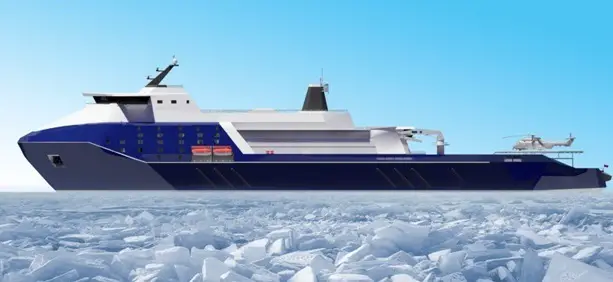|
PPP may finance construction of Russian Project 10510 icebreaker
|
| .a |
- Home
- Naval News
- Naval Defense Global News
- Naval Defense Exhibitions
- LIMA 2023
- Euronaval 2022 News Show Daily
- NAVDEX 2023 exhibitors visitors information
- DIMDEX 2022 Exhibitors Visitors Information
- DSEI 2021 News Show Daily
- DEFEA 2021 News Official Show Daily
- NAVDEX 2021 Exhibitors Visitors Information
- SEAFUTURE 2021 Exhibitors Visitors Information
- EURONAVAL 2020 Exhibitors Visitors Information
- DIMDEX 2020 Exhibitors Visitors Information
- 2020 Archives
- 2019 Archives
- 2018 Archives
- 2017 Archives
- 2016 Archives
- 2015 Archives
- 2014 Archives
- 2013 Archive
- 2012 Archive
- Naval Defense News TV
- Naval Defense Global News
- Advertising
- World Naval Forces
- World Naval Industry
- Focus
- Our Websites
Our News Coverage of 2021 Naval Defense Events
- Home
- Naval News
- Naval Defense Global News
- Naval Defense Exhibitions
- LIMA 2023
- Euronaval 2022 News Show Daily
- NAVDEX 2023 exhibitors visitors information
- DIMDEX 2022 Exhibitors Visitors Information
- DSEI 2021 News Show Daily
- DEFEA 2021 News Official Show Daily
- NAVDEX 2021 Exhibitors Visitors Information
- SEAFUTURE 2021 Exhibitors Visitors Information
- EURONAVAL 2020 Exhibitors Visitors Information
- DIMDEX 2020 Exhibitors Visitors Information
- 2020 Archives
- 2019 Archives
- 2018 Archives
- 2017 Archives
- 2016 Archives
- 2015 Archives
- 2014 Archives
- 2013 Archive
- 2012 Archive
- Naval Defense News TV
- Advertising
- World Naval Forces
- World Naval Industry
- Focus
- Our Websites








